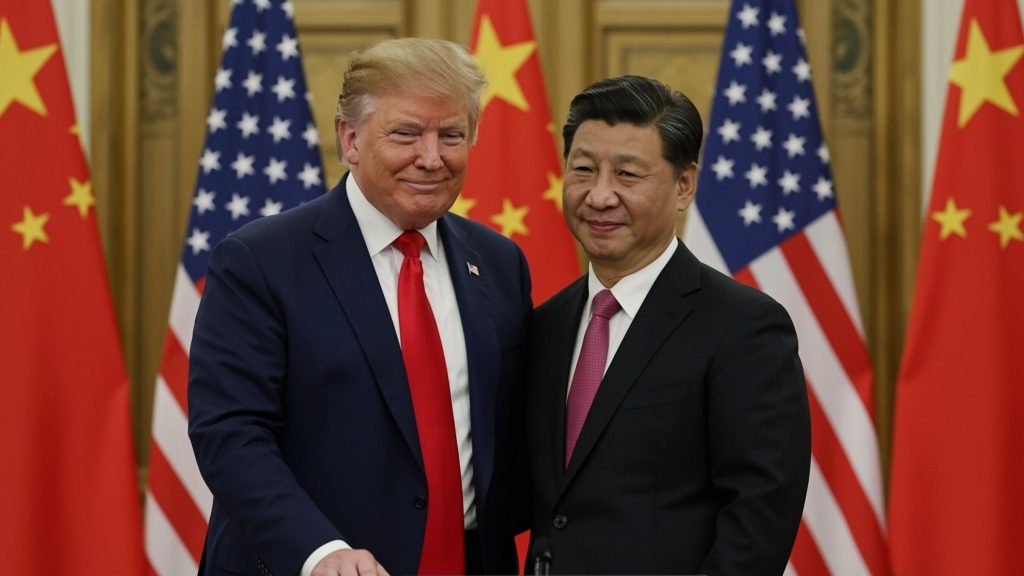
In Seoul on Thursday, US President Donald Trump and Chinese President Xi Jinping agreed to resume rare earth exports from China and expand clean energy tech center cooperation, even as Trump unveiled new AI and defense strategies reshaping US technology and global security.
The clean energy cooperative agreement highlights an important inflection point in the trade and technology relationship between Washington and Beijing, reflecting a fragile détente that binds together economic, environmental, and strategic interests. It also comes against an unsettled backdrop of natural disasters and global competition for critical minerals that power the clean energy transition.
Clean Energy Technologies Market
China’s decision to pause its planned restrictions on rare earth exports has set a relief to climate diplomacy global clean energy industries. These minerals vital for manufacturing wind turbines, solar panels, and electric vehicle batteries had been at the heart of escalating trade tensions.
“China has paused plans to dramatically expand restrictions on its rare-earths exports,” the Ministry of Commerce said, following Trump and Xi’s agreement. The clean energy technology move suspends export controls for one year, temporarily easing fears of a global supply crisis.
Meanwhile, the US has added efforts to diversify its access to these important resources. A recent AI for energy optimization agreement with Australia, valued at $8.5 billion, aims to develop new processing facilities for rare earths and other critical minerals.
“China is obviously protecting its own share in the market by limiting the technologies needed to process them,” said a metals analyst at BloombergNEF, Allan Ray Restauro.
Yet despite the new clean energy technologies efforts to reduce dependence, China remains dominant controlling about 92% of the world’s refined rare-earth supply. Western clean energy tech center companies like Siemens Gamesa and GE Renewable Energy have been seeking partnerships in Australia to mitigate risks.
As Oliver Metcalfe of Bloomberg NEF noted, “We’ve seen some wind power companies try to reduce their exposure to Chinese rare earths, but these types of projects take time to come to fruition.”
The G7 nations (Canada, France, Germany, Italy, Japan, the United Kingdom, and the United States) are now ready to announce a new alliance for critical mineral supply chains that could challenge smart grid technology for Beijing’s dominance. The plan includes stockpiling arrangements and alternative markets to stabilize global prices and supply.
US China Clean Tech Deal
The truce in Seoul extends beyond trade it intertwines clean energy with national security. Trump’s administration is advancing a comprehensive “AI Action Plan,” designed to reinforce America’s technological independence and counter what he describes as China’s “attempt to control global AI systems.”
The plan promotes rapid expansion of domestic chip fabrication and imposes strict tariffs up to 100% on imported semiconductors. “If you can’t make your own chips, how can you defend yourself?” said Commerce Secretary Howard Lutnick, explaining the goal of achieving a 50-50 production balance between domestic and imported chips.
Trump’s push aims to bring Big Tech to heel, ensuring that companies like Apple and NVIDIA manufacture more components on US soil. Under the proposed “chip-for-chip” framework, firms would need to produce as many chips domestically as they import or face tariffs. “Companies that don’t maintain a 1:1 ratio over time would have to pay a tariff,” Lutnick said.
Parallel to these developments, Trump announced a groundbreaking defense deal with South Korea to codevelop a nuclear powered submarine a move aimed at strengthening carbon capture centers and military cooperation in the Pacific.
“If South Korea was equipped with nuclear-powered submarines, that it could help US activities in the region,” said President Lee Jae Myung. Trump revealed that the submarine would be built at the Philly Shipyard, now owned by South Korea’s Hanwha Group, backed by a $150 billion investment in US shipbuilding capacity.
This strategic competition in cleantech is intertwined with decisions resuming rare-earth flows, imposing semiconductor tariffs, and sharing nuclear technology form the core of Trump’s strategy to reposition US leadership in clean energy, AI, and defense. Together, they show a larger shift toward economic nationalism framed as a race for technological sovereignty.
As the world deals with climate disasters like Hurricane Melissa’s $8 billion toll on Jamaica, the clean energy tech center insistence of sustainable innovation grows. Whether this delicate US China truce marks real cooperation or a temporary pause in a global tech cold war remains to be seen.
Inside Telecom provides you with an extensive list of content covering all aspects of the tech industry. Keep an eye on our Tech sections to stay informed and up-to-date with our daily articles.